Monday, December 3rd 2018

NVIDIA Presents the TITAN RTX 24GB Graphics Card at $2,499
NVIDIA today introduced NVIDIA TITAN RTX , the world's most powerful desktop GPU, providing massive performance for AI research, data science and creative applications. Driven by the new NVIDIA Turing architecture, TITAN RTX - dubbed T-Rex - delivers 130 teraflops of deep learning performance and 11 GigaRays of ray-tracing performance.
"Turing is NVIDIA's biggest advance in a decade - fusing shaders, ray tracing, and deep learning to reinvent the GPU," said Jensen Huang, founder and CEO of NVIDIA. "The introduction of T-Rex puts Turing within reach of millions of the most demanding PC users - developers, scientists and content creators."Ultimate PC GPU
NVIDIA's greatest leap since the invention of the CUDA GPU in 2006 and the result of more than 10,000 engineering-years of effort, Turing features new RT Cores to accelerate ray tracing, plus new multi-precision Tensor Cores for AI training and inferencing. These two engines - along with more powerful compute and enhanced rasterization - enable capabilities that will transform the work of millions of developers, designers and artists across multiple industries.Designed for a variety of computationally demanding applications, TITAN RTX provides an unbeatable combination of AI, real-time ray-traced graphics, next-gen virtual reality and high performance computing. It delivers:
TITAN RTX transforms the PC into a supercomputer for AI researchers and developers. TITAN RTX provides multi-precision Turing Tensor Cores for breakthrough performance from FP32, FP16, INT8 and INT4, allowing faster training and inference of neural networks. It offers twice the memory capacity of previous generation TITAN GPUs, along with NVLink to allow researchers to experiment with larger neural networks and data sets.
Perfect for Data Scientists
A powerful tool for data scientists, TITAN RTX accelerates data analytics with RAPIDS. RAPIDS open-source libraries integrate seamlessly with the world's most popular data science workflows to speed up machine learning.Content Creators Create Their Best Work
TITAN RTX brings the power of real-time ray tracing and AI to creative applications, so 5 million PC-based creators can iterate faster. It also delivers the computational horsepower and memory bandwidth needed for real-time 8K video editing.Available This Month
TITAN RTX will be available later this month in the U.S. and Europe for $2,499.
"Turing is NVIDIA's biggest advance in a decade - fusing shaders, ray tracing, and deep learning to reinvent the GPU," said Jensen Huang, founder and CEO of NVIDIA. "The introduction of T-Rex puts Turing within reach of millions of the most demanding PC users - developers, scientists and content creators."Ultimate PC GPU
NVIDIA's greatest leap since the invention of the CUDA GPU in 2006 and the result of more than 10,000 engineering-years of effort, Turing features new RT Cores to accelerate ray tracing, plus new multi-precision Tensor Cores for AI training and inferencing. These two engines - along with more powerful compute and enhanced rasterization - enable capabilities that will transform the work of millions of developers, designers and artists across multiple industries.Designed for a variety of computationally demanding applications, TITAN RTX provides an unbeatable combination of AI, real-time ray-traced graphics, next-gen virtual reality and high performance computing. It delivers:
- 576 multi-precision Turing Tensor Cores, providing up to 130 teraflops of deep learning performance.
- 72 Turing RT Cores, delivering up to 11 GigaRays per second of real-time ray-tracing performance.
- 24GB of high-speed GDDR6 memory with 672GB/s of bandwidth - 2x the memory of previous-generation TITAN GPUs - to fit larger models and datasets.
- 100GB/s NVIDIA NVLink can pair two TITAN RTX GPUs to scale memory and compute.
- Incredible performance and memory bandwidth for real-time 8K video editing.
- VirtualLink port provides the performance and connectivity required by next-gen VR headsets.
TITAN RTX transforms the PC into a supercomputer for AI researchers and developers. TITAN RTX provides multi-precision Turing Tensor Cores for breakthrough performance from FP32, FP16, INT8 and INT4, allowing faster training and inference of neural networks. It offers twice the memory capacity of previous generation TITAN GPUs, along with NVLink to allow researchers to experiment with larger neural networks and data sets.
Perfect for Data Scientists
A powerful tool for data scientists, TITAN RTX accelerates data analytics with RAPIDS. RAPIDS open-source libraries integrate seamlessly with the world's most popular data science workflows to speed up machine learning.Content Creators Create Their Best Work
TITAN RTX brings the power of real-time ray tracing and AI to creative applications, so 5 million PC-based creators can iterate faster. It also delivers the computational horsepower and memory bandwidth needed for real-time 8K video editing.Available This Month
TITAN RTX will be available later this month in the U.S. and Europe for $2,499.
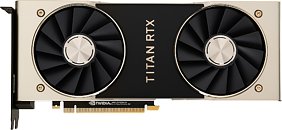
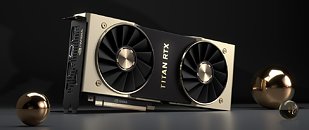
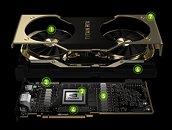
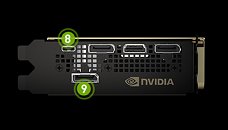
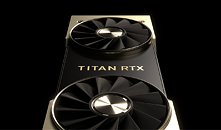

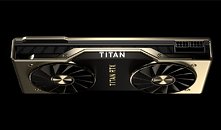
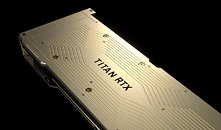
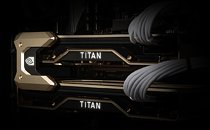
193 Comments on NVIDIA Presents the TITAN RTX 24GB Graphics Card at $2,499
Competition is in fact one variable which can (but not always) drives prices down (the absolute nature of you words make that passage incorrect). Another variable about pricing is what the market supports (as you said). If there is zero competition at that performance segment and the market supports it.. guess what.... we have pricey cards. But it isn't a case of the chicken or the egg.What about the DP performance on the RTX Quadros? Are those any different?
EDIT: That FP64 though... literally is the only place where its slower than the Titan V (right?)...
10,000 * 2,080
= 10,000 work years
OR
20,800,000 hours.
Btw: FP64 : FP32 ratio is very, very low on Titan RTX. Usual ratio lies between 1:2 and 1:3, Titan RTX has abysmal 1:32 ratio almost exactly as 3yo Quadro M6000. One more proof of deliberate market segmentation.
This is not a sign of lacking competition; even AMD have their counterpart "Vega Frontier Edition", priced at double the price of Vega 64. These are cards meant for developers and researchers, not for gamers. Also remember, these cards have limited availability in the market. Partners don't necessarily pay this price when getting these cards.
AMD still makes mainstreamish grade GPUs though. Saying this is like the AT&T monopoly is to massively overstate the situation.Because they do? Case in point, Microsoft has been bitch slapped by the USA several times in the past. Even moreso in the EU...
Wait what do you mean "no but 1440p at almost 22fps may now be possible"? Will they be defective like the number of 2080ti, 2080, and 2070 cards that blue screened or artifacted in the first 2 months?
Wait, did you just suggest buying 2 of these for $5000 to see how high I can get with 1440p? Sure... :kookoo:
Perhaps you can go take a look at this thread for some up to date news on its RT performance: www.techpowerup.com/forums/threads/dice-prepares-battlefield-v-rtx-dxr-performance-patch-up-to-50-fps-gains.250201/
You also have no idea how many cards have had issues. But you also must have missed the part about GN saying AIBs % were extremely low at that time (when people posted of issues) and NVIDIA said it wasn't higher than normal. Some of the issues were also situation specific and resolved with driver updates. The reality is, we have no idea. But I can tell you if it was a rampant issue, we would have seen A LOT more unhappy people than we did. Also, if you believe in the theory that the memory IC was the problem (I don't, few in the know seem to think so) they have also started using samsung along with the micron chips.